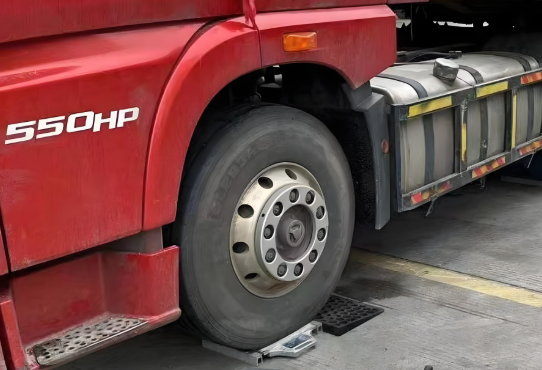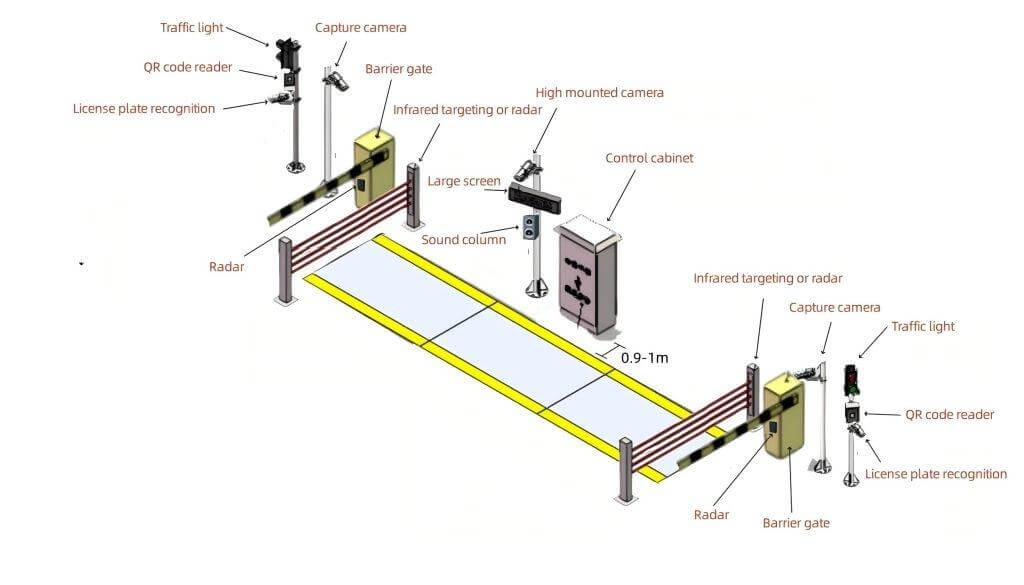How Much Does A Truck Weigh?(2025 Update)

Part 1. Why is Truck Weight So Important?
Legal Compliance
Truck weight regulations vary across countries and states. In the U.S., federal law limits the Gross Vehicle Weight (GVW) of a truck to 80,000 lbs (36.3 tons). Overloading may result in fines and vehicle impoundment, posing safety risks to roads and drivers.
Fuel Efficiency
Overloaded trucks compromise braking performance and steering control, raising the risk of accidents.
Safety
Overloaded trucks can strain braking systems, increasing the risk of accidents. Staying within the prescribed weight limits significantly improves driving safety.
Road Maintenance Costs
Heavy trucks cause greater damage to roads and bridges. Governments enforce weight limits to minimize excessive wear and tear on infrastructure, thereby reducing maintenance costs.

Part 2. Classification of Trucks and Their Average Weight
Trucks are categorized based on their purpose, structure, and weight capacity, with each type serving specific roles in transportation and logistics. Below is a comprehensive overview of the classification of trucks and their average weight ranges:
| Truck Type | Examples | Curb Weight | GVWR / Total Weight | Usage |
|---|---|---|---|---|
| Light-Duty Trucks (Class 1–3) | Pickup trucks (Ford F-150, Toyota Tacoma) | 1,800–2,700 kg (4,000–6,000 lbs) | 2,700–4,500 kg (6,000–10,000 lbs) | Daily transport, small deliveries, towing small trailers |
| Medium-Duty Trucks (Class 4–6) | Box trucks, delivery vans (e.g., FedEx, UPS) | 4,500–6,800 kg (10,000–15,000 lbs) | 7,300–11,800 kg (16,000–26,000 lbs) | Regional delivery, city logistics |
| Heavy-Duty Trucks (Class 7–8) | Semi-trucks, 18-wheelers | 13,600–18,000 kg (30,000–40,000 lbs) | Up to 36,300 kg (80,000 lbs) | Long-distance freight, intercity hauling |
| Specialized Trucks | Garbage trucks, cement mixers, crane trucks | — | Often exceeds 45 tons (100,000+ lbs) | Construction, mining, waste management |

Part 3. Main Factors Affecting Truck Weight
1. Vehicle’s Weight
The empty weight of a truck (i.e., the weight when not loaded) is primarily influenced by the weight of its frame, engine, tires, transmission system, and other components. The model and configuration of the truck will vary, affecting the weight of these parts.
2. Cargo Load
The weight of the cargo is a major factor affecting the total weight of the truck. The weight of the goods carried by the truck directly determines the overall weight. Different types of cargo (such as liquids, solids, or light/heavy items) will have varying impacts on the truck’s weight.
3. Body Structure
The materials used in the truck’s body (such as steel or aluminum) and the body design can also influence its weight. Using lightweight materials can reduce the overall body weight, while a heavier structure will increase the truck’s weight.
4. Trailers and Additional Equipment
If the truck is equipped with a trailer or additional equipment like lifting devices, extended fuel tanks, or transport devices, these extra components will increase the total weight of the truck.

5. Tires and Wheel Configuration
The type, size, and number of tires on the truck also affect its weight. Larger tires and more axles typically add to the truck’s total weight.
6. Fuel and Liquids
The weight of fuel and other liquids (such as coolant, brake fluid, etc.) in the truck’s fuel tank and other reservoirs contributes to the vehicle’s overall weight. When the truck is fully loaded, the weight of the liquids is significant, and the amount of fuel will affect the total weight.
7. Driver and Passengers
Although the weight of the driver and passengers usually does not contribute significantly to the truck’s total weight, it is still included in the total weight when the truck is weighed.
8. Environmental Factors
Environmental conditions such as weather and terrain can also influence the weight of the truck. For instance, the cargo may be affected by rain or snow, which could alter its weight.
Part 4. How to Weigh a Truck?
There are some methods for weighing a truck. Let’s take a closer look at each.
1. Weigh Stations
Weigh stations, also known as truck scales or truck weigh stations, are strategically located along highways and roads, mainly for commercial vehicles. They are designed to weigh trucks to ensure compliance with weight regulations.
How It Works:
- Approaching the Weigh Station: As you approach a weigh station, you’ll usually see a sign directing you to pull over and weigh your truck.
- Weighing the Truck: When you drive onto the weigh scale, the system will automatically record the weight of the truck and its load. Some weigh stations use static scales, which weigh the vehicle while it is stationary, and others use dynamic scales, which weigh vehicles while they are in motion.
- Receiving a Report: After weighing, the station will provide a weight report, which may also include information about the distribution of weight across the axles. If the truck is overweight, drivers will be instructed to adjust the load or face penalties.
Weigh stations are typically used for regulatory purposes, and truck drivers must stop and get weighed as part of the enforcement process.

2. Portable Truck Scales
For trucking companies, logistics providers, or private operators, using portable truck scales is a more convenient option to weigh trucks before hitting the road. These portable scales are great for weighing trucks directly at the loading or unloading site.
Types of Portable Scales:
Axle Scales: These are portable systems that weigh individual axles of the truck. They are useful for ensuring that the weight is evenly distributed across the axles, which is critical for both safety and legal compliance.
Portable Weighbridges: These large-scale systems are mobile and can weigh an entire truck with its load. Weighbridges are used when a more accurate and comprehensive weight measurement is required.
Wheel Weighing Pads: These smaller pads are placed under each wheel of the truck to measure the weight of the truck at each wheel position. These are particularly useful for checking axle load distribution.
How It Works:
- Setup: Place the portable scale or pads on a flat surface.
- Drive the Truck onto the Scale: Carefully drive the truck onto the scale or onto the wheel pads.
- Weight Measurement: The scale will measure the truck weight, and if using axle scales, the load distribution will also be shown.
- Read the Results: The system will display the weight for the whole truck or individual axles, helping you ensure that the truck is not exceeding weight limits.

3. Onboard Weighing Systems
For fleet operators, onboard weighing systems are a high-tech solution that helps drivers monitor the weight of their trucks in real-time.
How It Works:
- Sensors are installed on the truck to continuously measure the load weight.
- The data is sent to a display in the cab, so the driver can check the weight at any time during loading or driving.
- This system is especially useful for trucks that frequently carry varying loads, as it gives real-time feedback to prevent overloading.
Summary: Bincen Truck Scales for Managing Truck Weight
The weight of a truck varies depending on its type and purpose, ranging from a few tons for light-duty trucks to several dozen tons for heavy-duty trucks. If you’re looking for efficient and reliable weighing equipment, Bincen truck scales are your perfect solution





